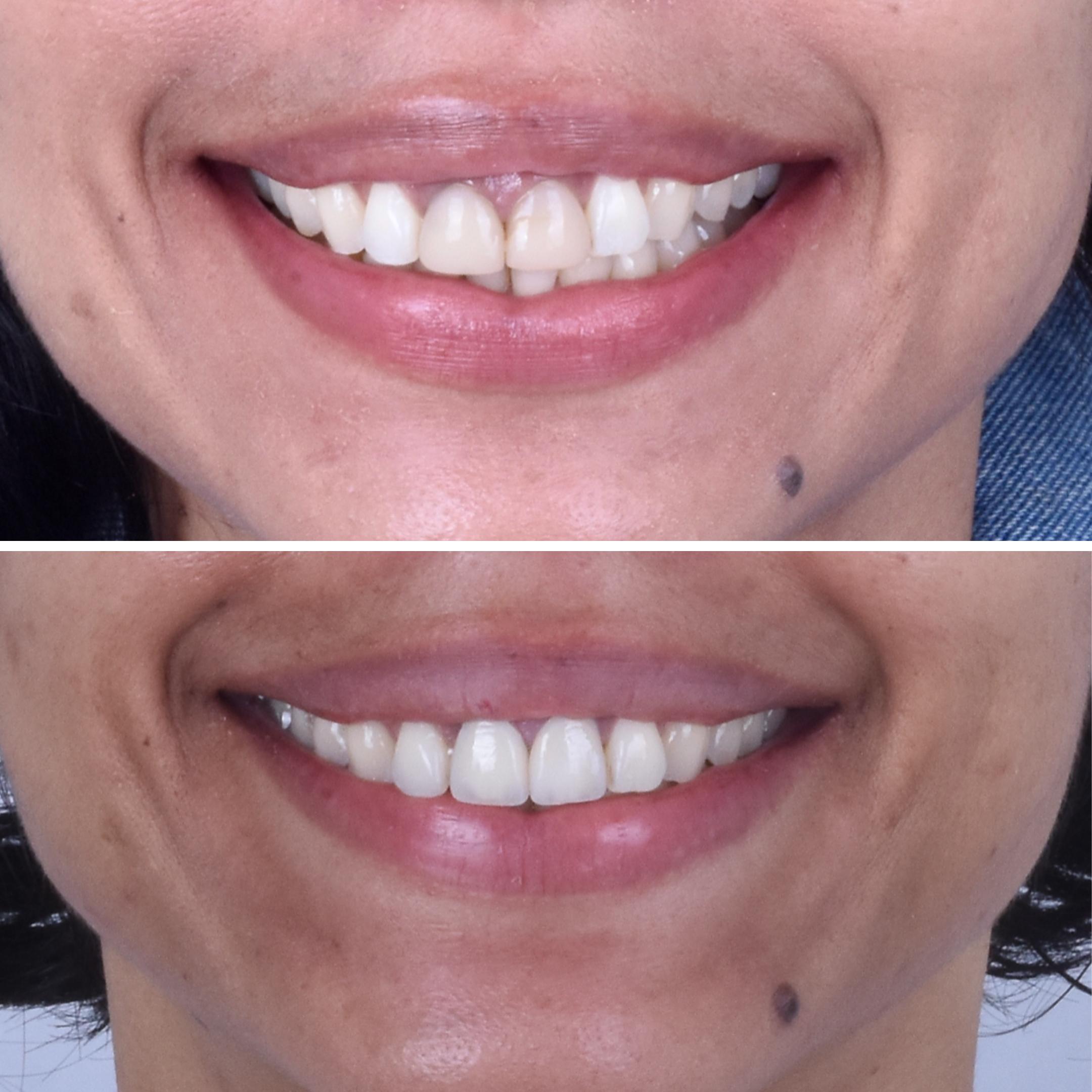Veneers
What are Veneers?
It is a wafer-thin shell that adhere to the remaining dental surface with the aim of recovering aesthetics and function.

When to use it?
- Dental veneers are the ideal choice in situations where the patient is not satisfied with the color and shape of their teeth despite the fact that they have undergone dental whitening or in situations where the original teeth are stained and have a very dark color.
- They are also a good option for fractured teeth, spaces between the teeth, what we call gaps, or if the patient has a dental anomaly such as peg-shaped teeth.

Do many teeth wear out with this Treatment?
The amount of wear will depend on the purpose for which we want to perform this procedure. If the goal is to achieve a slight color change and improve the shape slightly, the wear will be minimal. However, if we want to achieve a more aggressive color change because the tooth is stained, the wear must be greater so that the material we choose can hide the stain, preventing it from showing through. In both situations, the wear should be minimal because the veneer should ideally be attached to the enamel. If the wear is too much, then we must consider another treatment option, and all of this should be observed in the diagnostic stage. That’s why it’s important to diagnose first in order to treat.
What material are the veneers made of?
The material will depend on the purpose for which we want to carry out this procedure, within the purposes we can mention:
1. Slight changes in shape and color
2. Return the function in patients who have bites that do not work and are causing dental wear on the back of the teeth (palatal faces) these are called palatal veneers.
There are several materials but we would like to highlight two, we will explain the advantages of each one:
1. Composite veneers: They are the cheapest option of aesthetic veneers but they tend to suffer some deterioration or discoloration over time, on the other hand, they stand out for their easy placement and are easily repairable in case they suffer a mishap.
With this material we can make the veneers directly or indirectly. The direct one is made by the Doctor directly to the patient without the need to send it to the laboratory and the indirect one is when we take an impression and send it to the laboratory for its preparation.
2. Porcelain veneers: Porcelain veneers have a higher price but offer better results both aesthetically and in duration. They do not stain with the consumption of beverages such as coffee and wine and maintain their color and shine throughout their duration. Their preparation before placing them in the patient’s mouth is more laborious. With this material we can only make the veneers in an indirect way, this means that we must take an impression and send it to the laboratory for its preparation.
Actually, when choosing, it is convenient to evaluate the advantages and preferences for your particular case with your trusted dentist, since each option will present different advantages for your specific case.
Treatments that you could be interested




